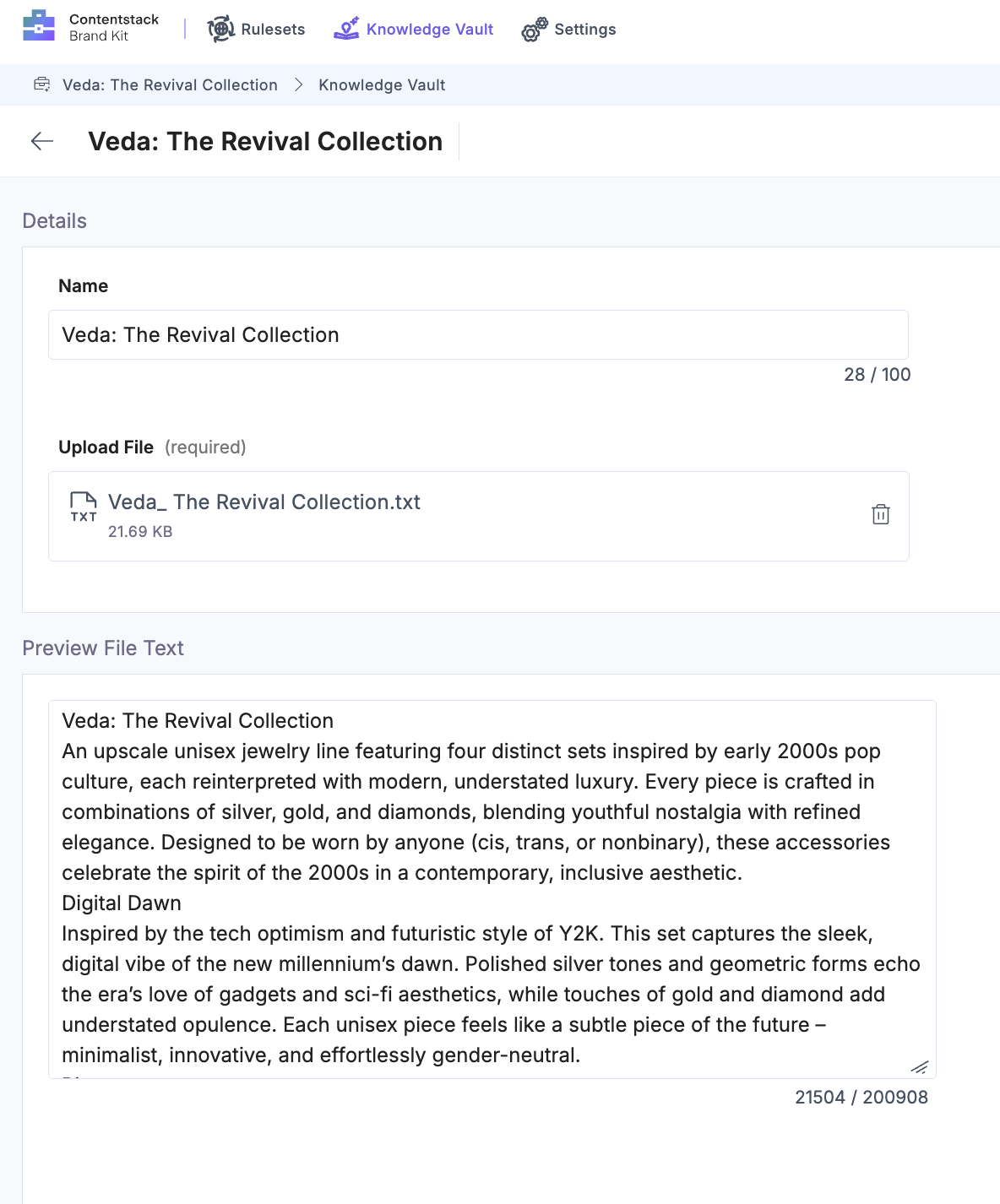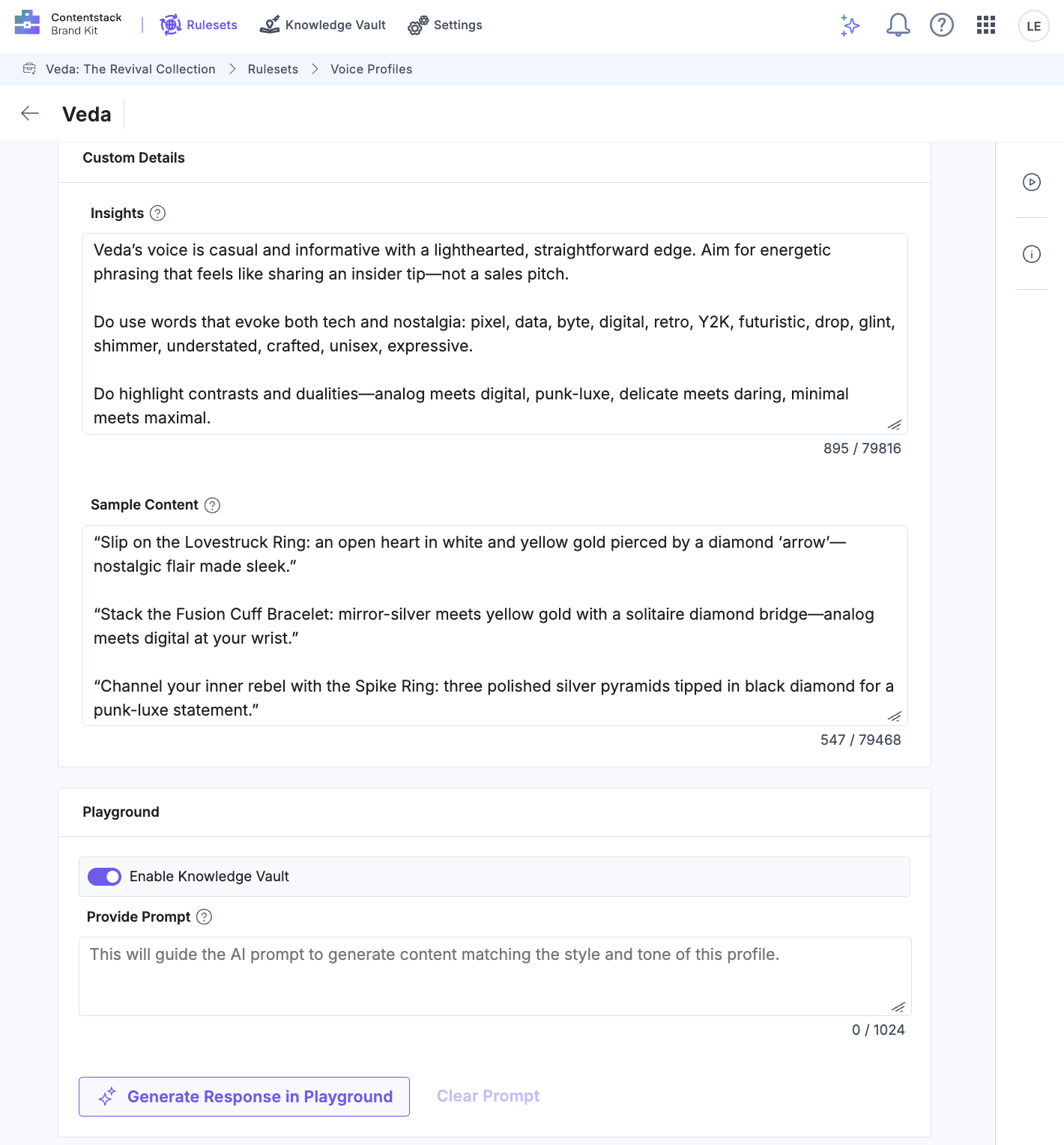Diving into AI prompting: A technical guide to context, iteration and brand-specific results
Share

This article covers how to effectively prompt AI to receive exceptional and accurate results, and explores advanced strategies for context management, iterative refinement, and brand alignment, highlighting tools like Contentstack's Brand Kit that transform AI prompting into a science by providing a contextual foundation for your organization. The guide outlines a structured approach to AI prompting, emphasizing the need for role definition, task clarity, context integration, and output formatting, while advocating for systematic testing and feedback integration to optimize AI performance and brand consistency.
The difference between mediocre and exceptional AI outputs often comes down to one critical factor: how you prompt the system.
While AI models have become incredibly sophisticated, they're only as good as the context and instructions they receive. This technical guide explores advanced prompting strategies, context management techniques and iterative refinement processes that help you get the most accurate response out of AI.
More importantly, we'll examine how enterprise-grade solutions like Contentstack's Brand Kit transform AI prompting from an art into a science, providing the contextual foundation that ensures AI outputs are technically correct and strategically aligned with your organization's brand, voice and business objectives.
Prompting paradigm shift: Product marketing use-case
Traditional product marketing workflows rely heavily on manual processes: crafting product messaging, developing go-to-market strategies, creating customer personas and coordinating multi-channel campaigns. AI promises to augment these capabilities, but only if properly directed.
The challenge? Most product marketers approach AI with the same mindset they use for search engines or basic automation tools. They type simple requests and expect sophisticated results. This approach fails because AI systems require structured guidance to understand your product positioning, target audience, competitive landscape and brand voice.
The four components of effective AI prompts
1. Role definition (the "who")
Start by establishing who the AI should be. For product marketing, this might be:
Example:
You are a senior product marketing manager with 10+ years of experience in B2B SaaS. You specialize in positioning complex technical products for C-suite, marketing, and technical buyers and have expertise in competitive analysis, messaging frameworks and multi-channel campaign development.
This context shapes the AI's perspective, vocabulary and approach to problem-solving.
2. Task definition (the "what" and "how")
Be explicit about what you want the AI to accomplish and any constraints or methodologies it should follow.
Weak prompt:
Create product messaging for our new feature.
Strong prompt:
Create a comprehensive messaging framework for our new AI-powered analytics feature. Include: 1. Primary value proposition (one sentence) 2. Three key benefits with supporting proof points 3. Competitive differentiators vs. top 3 competitors 4. Audience-specific messaging for IT Directors, Marketing VPs, C-suite executives, and developers 5. Recommended positioning in our existing product portfolio Follow the messaging hierarchy framework: Category → Product → Feature Ensure messaging aligns with our brand voice profile and addresses common objections about AI accuracy and implementation complexity.
3. Context integration (the "what")
This is where enterprise AI systems truly shine. Context isn't just about the immediate task, it's about understanding the broader business environment, competitive landscape, customer insights and strategic objectives that should influence every product marketing decision.
4. Output formatting (the "format")
Defining clear output requirements ensures consistency and enables downstream processing. Whether you need structured JSON for system integration, formatted markdown for documentation, or presentation-ready content, explicit formatting instructions are crucial.
Context is queen: Unlocking enterprise AI
Here's where most AI implementations fail: they treat context as an afterthought rather than the foundation of intelligent behavior. Research shows that AI systems perform dramatically better when provided with rich, relevant context rather than generic instructions.
The context hierarchy
Effective context management follows a hierarchical structure:
Organizational context: Company mission, values and strategic objectives
Brand context: Voice, tone, messaging guidelines and visual identity
Product context: Product specifications, roadmap, positioning and competitive landscape
Customer context: Target personas, pain points, buying journey and success metrics
Market context: Industry trends, competitive intelligence and regulatory considerations
Task context: Specific objectives, constraints and success criteria
How Brand Kit transforms context management
Contentstack's Brand Kit represents a shift in how enterprises approach AI context management. Rather than manually crafting context for each interaction, Brand Kit provides a centralized, intelligent context layer that automatically enriches AI prompts with relevant brand and organizational knowledge.
Knowledge Vault: Your AI's memory
The Knowledge Vault is a vector database containing your organization's authoritative information. When an AI agent needs to generate product messaging or develop campaign strategies, it performs semantic searches against this vault to find the most relevant, approved information.
This process, known as Retrieval-Augmented Generation (RAG), grounds AI responses in factual, company-approved knowledge, dramatically reducing hallucinations and ensuring accuracy.

Voice Profiles: Dynamic brand alignment
Voice Profiles go beyond static brand guidelines. They're dynamic, AI-powered definitions of your brand's personality that can adapt to different contexts, audiences and content types while maintaining consistency.
Technical implementation:
Brand Kit integrates at the API level, automatically injecting relevant context into every AI interaction. When an agent generates product messaging, it first queries the Knowledge Vault for relevant information, applies the appropriate Voice Profile and ensures the output aligns with brand guidelines; all without manual intervention.

Advanced prompting techniques
Chain-of-thought prompting
This technique encourages AI systems to show their reasoning process, leading to more accurate and explainable results. Instead of asking for a direct answer, you prompt the AI to think through the problem step by step.
Example:
Develop a go-to-market strategy for our new product launch. Think through this step-by-step: First, analyze our target customer segments and their current pain points Then, evaluate our product's unique value propositions against competitor offerings Next, identify the most effective channels and messaging for each segment Finally, provide a phased rollout plan with success metrics and budget allocation
Role-based prompting
Assign specific roles or personas to the AI to influence its perspective and approach. Contentstack's Agent architecture allows you to create specialized sub-agents for different product marketing functions.
Example:
Create specialized agents for different product marketing tasks: CompetitivelligenceAgent() to analyze market positioning; MessagingAgent() to develop product narratives; PersonaResearchAgent() to build customer profiles; CampaignAgent() to design multi-channel strategies; LaunchAgent() to coordinate go-to-market execution.
Multi-modal prompting
Modern AI systems can process text, images and other data types simultaneously. Brand Kit's upcoming multimodal capabilities will extend brand consistency beyond text to visual assets and multimedia content.
The art of iterative refinement
Effective AI prompting is rarely a one-shot process. It requires systematic iteration and refinement based on results and feedback.
Here's a proven methodology:
The OODA loop for AI prompting
Observe: Analyze the AI's output quality, message resonance and brand alignment
Orient: Understand what context or customer insights might be missing
Decide: Determine specific improvements to make to the prompt
Act: Implement changes and test the refined prompt
Systematic testing strategies
Contentstack's Agent Playground provides a controlled environment for prompt testing. Key testing approaches include:
A/B testing: Compare different messaging variations to identify the most effective approach
Persona testing: Verify that outputs resonate with different customer segments
Brand consistency testing: Ensure that outputs maintain brand voice across different scenarios
Performance testing: Monitor token usage, response time, and cost efficiency
Feedback integration
Build feedback loops into your AI systems. Brand Kit's analytics capabilities track content performance and brand compliance, providing data-driven insights for prompt optimization.
Enterprise-grade prompt management
Version control for prompts
Treat prompts like code: use version control, document changes and maintain rollback capabilities. Contentstack's Agent management system provides built-in versioning and deployment controls.
Governance and compliance
Enterprise AI requires robust governance. Key considerations include:
Audit trails: Complete logging of AI decisions and actions
Permission management: Role-based access to different AI capabilities
Brand compliance: Automated checking against brand guidelines
Content approval: Workflow integration for human oversight
Cost optimization
AI systems can consume significant computational resources. Optimtionkkstrategies include:
Efficient prompting: Clear, concise instructions reduce token usage
Model selection: Choose appropriate models for different tasks
Caching: Store and reuse common responses
Rate limiting: Control usage to manage costs
Practical implementation guide
Getting started with Brand Kit enhanced prompting
Establish your knowledge base: Populate the Knowledge Vault with product documentation, competitive analyses, customer research, messaging frameworks and approved campaign examples
Define voice profiles: Create detailed voice profiles for different contexts (product launches, customer communications, sales enablement, thought leadership)
Start simple: Begin with basic prompts for everyday tasks like feature announcements and gradually add complexity
Test systematically: Use the Agent Playground to validate messaging effectiveness before deployment
Monitor and iterate: Continuously refine based on campaign performance data and customer feedback
How to avoid common pitfalls
Vague instructions: Be specific about target audience, desired outcomes and competitive context
Context overload: Provide relevant customer insights and product information, not everything you know
Ignoring brand guidelines: Always integrate brand requirements and messaging hierarchies into prompts
One-size-fits-all: Customize prompts for different personas, channels and campaign stages
Neglecting testing: Always validate messaging resonance before production deployment
Conclusion
Organizations that master these techniques today will have a significant competitive advantage as AI becomes increasingly central to go-to-market operations.
By integrating advanced prompting strategies with enterprise-grade context management, you are not merely utilizing AI. Instead, you are developing an intelligent digital companion that comprehends your products, customers and market positioning.
Key takeaways
Context is queen: Rich, relevant product and customer context dramatically improves AI performance
Structure matters: Use the four-component prompt framework for consistency
Iterate systematically: Treat prompt refinement as an ongoing process
Leverage enterprise tools: Solutions like Brand Kit automate context management at scale
Test rigorously: Validate messaging effectiveness before production deployment
Monitor continuously: Use analytics to optimize campaign performance and costs



